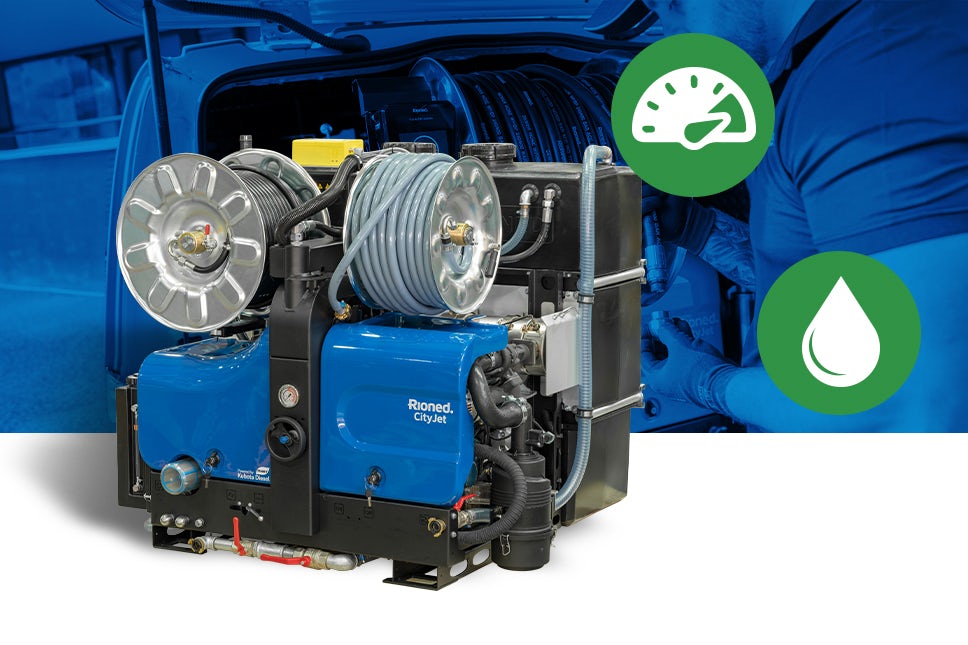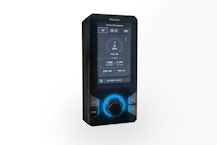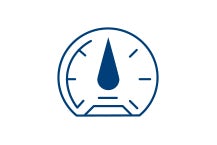- Guides
How to Choose the Right Sewer Jetter?

Selecting the ideal sewer jetter for your specific requirements is crucial for efficient and effective sewer and drain cleaning. Rioned offers a range of advanced high-performance jetters, including the CityJet, eCityJet, UrbanJet, and AquaJet. In this guide, we'll take you through the key considerations, particularly the water pressure and flow rate, to help you make an informed choice.
Understanding Jetter Pressure and Flow
Before we delve into the specifics of sewer jetters, let's briefly understand the significance of pressure and flow rate in sewer jetters.
Pressure: PSI or BAR represents the pressure at which water is delivered through the jetter's nozzle. A higher PSI/BAR means that the water is being forced through the nozzle with greater force. This high-pressure water stream is essential for breaking up and dislodging stubborn blockages, such as tree roots, grease buildup, or solid debris, within sewer pipes.
PSI (pounds per square inch) and BAR (barometric pressure) are two different units of measurement for pressure, and they are often used interchangeably in various applications, including jetting machines. However, there is a conversion factor between the two:
1 BAR is approximately equal to 14.5 PSI.
So, when it comes to water pressure in jetting machines, the primary difference between PSI and BAR is the unit of measurement used. PSI is commonly used in the United States, while BAR is more prevalent in many other parts of the world, especially in Europe, although the UK still primarily uses PSI.
For example, if a jetting machine is rated at 3,000 PSI, its equivalent pressure rating in BAR would be approximately 206 BAR (3000 PSI ÷ 14.5 PSI/BAR = 206 BAR).
Flow Rate: Indicates the volume of water delivered by the jetter per minute and is either expressed as GPM (Gallons Per Minute) or LPM (Litres Per Minute). A higher flow rate results in a greater volume of water flowing through the sewer pipe.
GPM is a unit of measurement commonly used in the United States and some other countries that still sometimes use the imperial measurement system, such as the UK. LPM is a unit of measurement typically used in countries that use the metric system, such as on mainland Europe.
To convert between GPM and LPM, you can use the following approximate conversion factor:
1 GPM = 3.78541 LPM
1 LPM = 0.264172 GPM
For example, if a jetting machine's water flow is rated at 16 gpm, its equivalent flow rate in LPM would be approximately 72 lpm.

How Pressure and Flow Work Together
The relationship between water pressure and water flow in sewer jetting is crucial to understand as it directly affects the efficiency and effectiveness of the cleaning process. Without wanting to oversimplify what is often a choice based on the requirements of the jetting task, here are a few rules of thumb:

Higher Water Pressure with Lower Water Flow: This combination delivers a focused and powerful stream of water. It is ideal for penetrating and cutting through tough blockages and obstructions. It's often used for more challenging sewer cleaning tasks.
Higher Water Flow with Lower Pressure: This combination provides a high volume of water but with less pressure. It's effective for flushing away loose debris and sediment within the sewer pipe. It's commonly used for routine maintenance and clearing relatively simple clogs.
Higher Water Pressure with Higher Water Flow: This is the most powerful combination, delivering both a strong stream and a high volume of water. It's suitable for a wide range of sewer cleaning tasks, including tackling severe blockages and maintaining larger pipes.
In practice, the choice between pressure and flow depends on the specific cleaning needs and the type of blockage you're dealing with. For example, for routine maintenance and smaller pipes, a sewer jetter with moderate pressure and flow may suffice. However, for more challenging blockages or larger pipes, a sewer jetter with higher pressure and flow is often necessary to effectively clear the obstruction.
Rioned Jetters
Now, let's explore Rioned’s van-pack jetters and their specifications:

CityJet Van-Pack Jetter
The CityJet is our premier van-pack jetter designed for efficient drain and sewer cleaning, accommodating pipes up to 450mm in diameter. As the most compact machine in its class, it not only excels in design, performance, and reliability but also enjoys widespread trust from users worldwide who depend on their CityJet day in and day out.
The CityJet's lightweight frame optimizes vehicle capacity, making it suitable for installation in most small and mid-size commercial vehicles. Furthermore, you have the flexibility to choose between Diesel or Petrol engines to power your CityJet. For added versatility, consider our PTO (Power Take-Off) version, compatible with Mercedes Benz Sprinter vehicles.
| PTO | |
|---|---|
| 3000 psi / 13 gpm | 200 bar / 60 lpm |
| 2400 psi / 17 gpm | 160 bar / 75 lpm |
| Kubota Petrol or Kubota Diesel | |
| 4600 psi / 10 gpm | 320 bar / 46 lpm |
| 3600 psi / 13 gpm | 250 bar / 60 lpm |
| 2400 psi / 19 gpm | 160 bar / 85 lpm |
| 4000 psi / 12 gpm | 270 bar / 54 lpm |
| 3000 psi / 16 gpm | 200 bar / 72 lpm |
| 2200 psi / 22 gpm | 150 bar / 100 lpm |

eCityJet Van-Pack Jetter
Introducing the eCityJet, the eco-friendly solution for high-pressure drain cleaning in pipelines up to 350mm in diameter. This innovative machine delivers top-notch performance, boasting 3000psi @ 13gpm, while offering all the capabilities of a traditional diesel-driven jetter. The key difference lies in its robust electric motor, powered by an ultra-efficient rechargeable 34.2kWh battery pack.
One standout feature of the eCityJet is its zero emissions output, making it the perfect choice for operations in city centres where stringent emission regulations are in place, or in enclosed or partially enclosed environments. With a compact frame and a dry weight of just 756kg, the eCityJet seamlessly fits into most commercial vehicles, providing flexibility and convenience for your drain cleaning needs.
| 2300 psi / 17 gpm | 160 bar / 75 lpm |
| 3000 psi / 13 gpm | 200 bar / 60 lpm |

UrbanJet Van-Pack Jetter
The UrbanJet and UrbanJet Premium have been designed primarily as compact and versatile jetting machines for operation in pipelines up to 350mm. Available with a choice of an industrial, water-cooled diesel or petrol engine, it's the perfect solution for unclogging house connections and light commercial cleaning tasks.
Operate the machine effortlessly through the award-winning eControl+ machine management system or opt for the convenience of 5 or 7-channel radio remote controls, ensuring safe and efficient operation even with a single person. The new UrbanJet Premium also features a 180° pivoting hose reel for ease of access to drain inlets.
| Kubota Diesel D1105 | |
|---|---|
| 3000 psi / 10 gpm | 200 bar / 45 lpm |
| 2000 psi / 13 gpm | 140 bar / 60 lpm |
| 2000 psi / 15 gpm | 140 bar / 70 lpm |
| Kubota Petrol Water-Cooled WG972 | |
| 3000 psi / 12 gpm | 200 bar / 55 lpm |
| 2000 psi / 15 gpm | 140 bar / 70 lpm |

AquaJet Van-Pack Jetter
The AquaJet is a low-cost solution for efficient drain and sewer cleaning up to 300mm in diameter. This powerhouse is equipped with a Honda air-cooled petrol engine, delivering outstanding performance at a standard 2200psi and 10gpm.
What sets the AquaJet apart is its remarkable lightweight design, with a mere 280kg dry weight. It fits easily into almost any low-weight drainage van or pick-up, leaving ample room for tools and additional equipment. Compatible with popular models like the Toyota Hiace, Mercedes Benz Vito, Volkswagen Transporter, or Caddy.
| Honda Petrol Air-Cooled (15 kW / 20 hp) | |
|---|---|
| 2200 psi / 10 gpm | 150 bar / 45 lpm |
| Honda Petrol Air-Cooled (18 kW / 24 hp) | |
| 2000 psi / 13 gpm | 140 bar / 60 lpm |
| 2200 psi / 12 gpm | 150 bar / 55 lpm |
| 2800 psi / 10 gpm | 190 bar / 45 lpm |
In Conclusion
In conclusion, choosing the right sewer jetter involves understanding your specific cleaning needs, including the type of blockages and pipe sizes you commonly deal with. The Rioned jetters offer a range of pressure and flow rate options to accommodate various requirements, ensuring efficient and effective drain cleaning.
When investing in a sewer jetter, take the time to assess your needs and select the model that best matches your specific challenges. With the right jetter in your arsenal, you'll be well-equipped to tackle sewer and drain maintenance with ease.
- Guides















